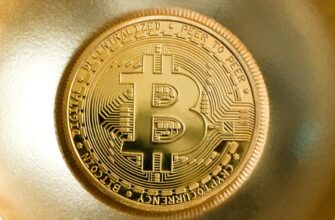- Why Bitcoin Safety Can’t Be Ignored
- Step-by-Step: Buying Bitcoin Securely
- Choosing Your Digital Fort Knox: Wallet Types
- Vetting Bitcoin Exchanges: Red Flags & Green Lights
- Transaction Security Protocols
- The Golden Rule: Long-Term Storage Security
- Bitcoin Safety FAQ
- Is peer-to-peer (P2P) trading safe?
- Can I reverse a Bitcoin transaction?
- How do I spot fake exchanges?
- Are Bitcoin ATMs secure?
- What if my exchange gets hacked?
Why Bitcoin Safety Can’t Be Ignored
With Bitcoin’s value surging past $60,000 in 2024, crypto scams have exploded by 300% according to FTC reports. Learning how to safely buy Bitcoin isn’t optional—it’s essential armor against hackers, phishing schemes, and fraudulent exchanges. This guide walks you through security-focused purchasing methods that shield your investment from day one.
Step-by-Step: Buying Bitcoin Securely
- Verify exchange credentials: Only use platforms registered with FinCEN (US) or FCA (UK) with 2FA enforcement
- Fund via bank transfer: Avoid debit/credit cards due to irreversible fraud risks
- Enable whitelisting: Restrict withdrawals to pre-approved wallet addresses
- Start small: Test with $50 transactions before larger purchases
- Withdraw immediately: Move coins to your private wallet within 24 hours
Choosing Your Digital Fort Knox: Wallet Types
Your wallet determines your Bitcoin’s vulnerability. Consider these options:
- Hardware wallets (Ledger/Trezor): Offline storage with PIN protection—ideal for large holdings
- Mobile wallets (Blockchain.com): Encrypted apps with biometric access for frequent use
- Paper wallets: Physically printed keys with zero digital footprint
- Avoid web wallets: Browser-based options are prime hacker targets
Vetting Bitcoin Exchanges: Red Flags & Green Lights
Not all platforms are created equal. Prioritize exchanges with:
- ◇ 95%+ cold storage of user funds
- ◇ Insurance against breaches (e.g., Coinbase’s $255M coverage)
- ◇ SOC 2 Type 2 compliance certification
- ◇ Transparent fee structures (avoid hidden "spread" costs)
Steer clear of platforms demanding unusual verification like social media passwords or offering “guaranteed” returns.
Transaction Security Protocols
Implement these measures for every purchase:
- Always triple-check wallet addresses (malware can alter copied text)
- Use segregated witness (SegWit) addresses starting with “bc1q”
- Enable multi-signature approvals for transactions over $1,000
- Monitor mempool congestion to avoid overpaying transaction fees
The Golden Rule: Long-Term Storage Security
Leaving Bitcoin on exchanges risks FTX-style collapses. For holdings over $500:
- Use hardware wallets stored in fireproof safes
- Create encrypted metal backup plates (Cryptosteel)
- Distribute seed phrases across multiple secure locations
- Never store digital copies of recovery phrases
Bitcoin Safety FAQ
Is peer-to-peer (P2P) trading safe?
Only with escrow services like Paxful’s mediated transactions. Avoid direct transfers—43% of P2P scams involve fake payment confirmations.
Can I reverse a Bitcoin transaction?
No. Blockchain transactions are irreversible. Always send test amounts first.
How do I spot fake exchanges?
Check SSL certificates, domain registration dates (avoid <6 month old sites), and look for inconsistent branding. Legitimate platforms never contact you first via Telegram.
Are Bitcoin ATMs secure?
High-risk due to limited regulation. Fees average 15% versus 0.5% on regulated exchanges. Use only for small amounts with QR code scanning.
What if my exchange gets hacked?
Immediately enable withdrawal lockdown and contact support. Funds in cold storage remain safe—only hot wallets are vulnerable.
Remember: Your Bitcoin security scales with your vigilance. By combining hardware storage, verified exchanges, and transaction best practices, you turn digital gold into a fortress.








